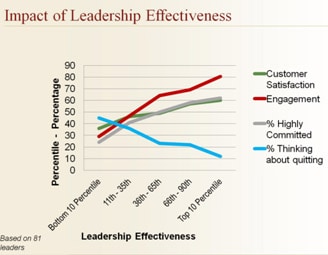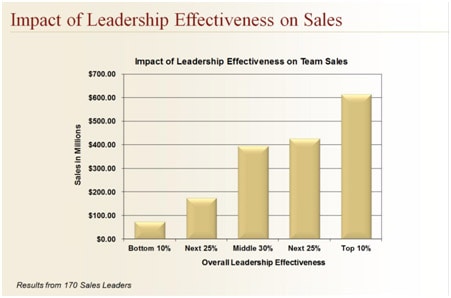Resources – Video – Train 3 – Evaluate Employees For Job Fit

Recently I asked a small business owner to provide the current job descriptions for a key office person.
This is the list provided by the employee: “ answer phones, open mail, dictation, schedule appointments, take out trash, add postage to meter, take deposit to bank, enter payroll, filing.”
How often do your employees have to “fill in the blanks” to determine the what, when, why and how to do their jobs? Why do we make them guess if they are doing their job “right”?Unfortunately, this example is not a rare occurrence—many businesses do not have written job descriptions that include even the basic job requirements. When I interviewed the employee her position required a much higher level of skill and experience than that list of duties imply. She also was able to explain more about the “why and how” about her position’s purpose and process to accomplish it. She knew what her job entailed and how it should be performed, and despite specific expectations from her manager, she even had weekly goals that she achieved. (For example, she expected to respond to inquiries within one day and type up all dictated documents by the end of the week.)
If you want employees to do their absolute best, they need clear expectations including performance standards. One critical document can provide this information, for your use in managing performance and to select effective new hires. We call this document the Job Responsibility Profile. This is far more than just a job description (a brief statement of 8 general duties).
A job description might be the same for a customer service representative at 100 companies: respond to customer inquiries, provide information on product, and take orders.
A Job Responsibility defines the specific knowledge, skills, abilities and personality traits of an ideal employee and then provides performance metrics to define performance requirements More hints.
Job Responsibility should include information for a manager to:
Once you have documented the Job Responsibility Profile (JRP), do not just “file” this away. To be effective, this document becomes the basic work plan for an employee and used as part of your performance management process. An employee’s work should be continually compared to the outline and metrics contained in the JRP. Any deviation from the “standard” becomes an opportunity for feedback (positive or negative).
If the metrics for an associate attorney is to bring in one new major client per quarter and have 90 billable hours per month, every associate attorney should know this and also receive data on their performance compared to these metrics. When an employee exceeds expectations, this should be at least recognized, and ideally, continued exceptional performance rewarded in a Total Rewards package. Even top performers may lose motivation to continue their great work if it does not “seem” appreciated.
When recruiting for a new employee, the JRP provides the description of the position and ideal candidate. Then applicants are screened against the JRP. For example, does this receptionist applicant have knowledge and skill that would prepare her for this job (answer 100 calls a day, type up 20 letters and mail 25 marketing packets)? Does the applicant have the personality to be friendly and maintain her composure with 3 phones ringing at once? Once a candidate is selected, the JCP becomes the outline of duties to train a new employee. (For best results, also develop more detailed standard operating procedures and training checklists and manuals to augment the JCP outline).For employees who are not meeting expectations, supervisors should counsel employees to determine the cause and together develop solutions. Remember that performance gaps can be a function of motivation, ability or external obstacles. Some employees need either praise or corrective action to meet expectations—if they receive neither then performance often slips. Many times employees do not perform because they do not currently have the ability; they might need training, guidance, or a simple process to follow. Some might not have the core competency or personality to truly excel at one or more job functions (such as asking a high structure person to react and juggle 3 phone calls). Lastly, there are often obstacles to performance such as limited resources, urgent items, or dependency on others work that can prevent achievement of goals. An employee’s performance improvement plan needs to address the root cause to be most effective.
In summary, the Job Responsibility Profile (JRP) is a roadmap for each employee to understand expectations, benchmark their performance, and a tool for managers to improve poor performance and recognize and motivate exceptional work.

In a study by the Labor Relations Institute of NY, managers selected what they thought employees valued most, and then asked employees what they valued:
Manager /Employee rank- Job Reward
You can see that the TOP 3 for employees were listed as the BOTTOM 3 in the eyes of managers. Hmm.. I wonder how much time and effort these managers put into these “bottom” rewards if they consider such each a low priority?
As a specialist in compensation, we regularly visit prospective clients who are convinced that their organization needs to pay more to attract, retain and motivate their team members. (And some of them do indeed have issues with pay below the market or internally inequitable.)
However, if your pay is fair for the work you expect and compared to others in your organization, one of the best investments you can make in building a terrific team is with recognition.
Recognition is practically free and creates an immediate impact such as:
(Manager Survey Source: Foreman Facts, Labor Relations Institute of NY, 2004)
For a Quick recognition template view our 4/23 blog post
Image courtesy of watcharakun at FreeDigitalPhotos.net

The Corporate Executive Board Company (CEB) analyzed performance based on information from more than 20,000 managers and their employees (40 organizations across the globe).
They found 10 competencies differentiated and identified “high performers” able to succeed in our volatile, changing “new work environment.”
These competencies can be categorized into three key areas – adapting to change, working collaboratively, and applying judgment:
Adapt to Change
• Organizational awareness
•Self-awareness
•Proactivity
•Learning agility
Work Collaboratively
•Teamwork
•Influence
•Technical expertise
Apply Judgment
• Prioritization
•Problem solving
•Decision making
According to their research, these competencies are found in about 5% of the working population. They also suggest that “The competencies essential to strong performance in the new work environment are best developed through on-the-job experience with a single company over time.”
What can your small or mid-sized organization due to develop at least part of your staff into high performers by focusing on these skill sets?
Read the full report at:
Identifying and Enabling the New High Performer
Image courtesy of chanpipat at FreeDigitalPhotos.net

I have the spent the past few weeks having conversations with senior managers in a variety of small and mid-sized organizations, ranging in size from one with 7 employees to one with over 700.
These conversations focus on how we can work together to assist their people to help these organizations achieve 2013 goals, but often the conversation turns to how to develop the staff they have.
These managers like their staff and want to see them grow and contribute more, as well as be more connected to the organization and more fulfilled in their work. They want to retain these team members and to provide meaningful rewards.
Many managers and organizations seem to be challenged by the prospect of how to develop employees, such identifying what skills are needed and how to accomplish this when there is “no time for training.”
A recent book (Help Them Grow or Watch Them Go, Beverly Kaye and Julie Winkle Giulioni) may provide some answers, and challenges some of the myths that prevent smaller employers from focusing development efforts on their team (if they grow they will leave us, the employee is responsible for her own career, it’s about the money, development plans are for the Fortune 500 or just senior managers).
According to Kaye and Giulioni, “Career development is as important as it’s ever been (maybe more). In today’s business environment, talent is the major differentiator. And developing that talent is one of the most significant drivers of employee engagement, which in turn is the key to the business outcomes you seek: revenue, profitability, innovation, productivity, customer loyalty, quality, and cycle time reduction.”
One insight is that employee development can be accomplished with informal, brief, focused “10-minute conversations” that uncover an employee’s aspirations and goals and matches to learning opportunities.
-Diana Southall
Image courtesy of ddpavumba at FreeDigitalPhotos.net

Supervisors—you can’t fire yours, but you certainly can leave them…
The topic of the supervisor- employee relationship has been researched and written about since “industrial psychology” started as a field. A recent book title summarize the importance of this dynamic in retaining and engaging employees, “People Leave Managers, Not Organizations.”
How many times did you come home from work and shared your frustration with your manager to friends or family? If this continued, was this a factor in a new job search?
Okay, you say, good supervisors are important, but what is the real impact of a great one? Perhaps you have a few good ones, and few okay ones and only one that is really struggling to connect with her staff and/or achieve important results.
Consider these findings from Zenger Folkman group (see charts below):
What makes supervisors “multipliers” or “diminishers”—read Zenger Folkman article that lists the key “fatal flaws” of managers


Image courtesy of Stuart Miles at FreeDigitalPhotos.net